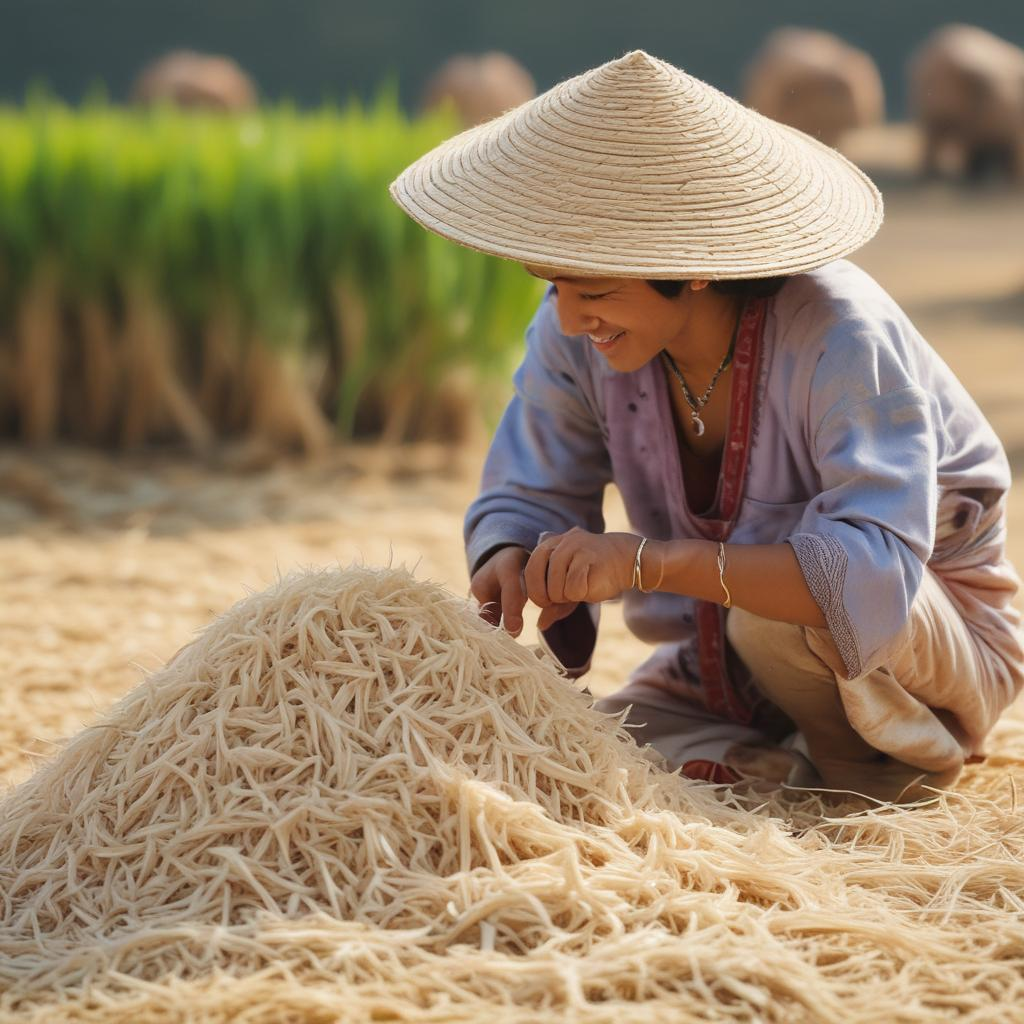Introduction to Basmati Rice
Basmati rice, a variety renowned for its fragrant aroma and exquisite flavor, has a rich history that dates back thousands of years. Primarily grown in the Indian subcontinent, this long-grain rice is highly prized both in gastronomy and in cultural rituals. The cultivation and production of Basagmiti rice involve traditional methods that have been passed down through generations, reflecting a deep connection to the land and its history.

The Origins of Basmati Rice
The story of Basmati rice begins in the Indian subcontinent, where it has been cultivated for centuries. Historical records and genetic studies suggest that Basmati rice originated from wild Indian rice varieties. Over time, careful selection and cultivation practices developed Basmati rice into the high-quality grain known today. The name "Basmati" itself comes from Sanskrit, meaning "fragrant," which aptly describes its distinctively nutty aroma.
Geographical Significance
Basmati rice thrives in specific geographical regions, particularly in Northern India and parts of Pakistan. The unique soil composition, coupled with specific climatic conditions of the Himalayan foothills, contributes to the distinctive taste and aroma of Basmati rice. States such as Punjab, Haryana, Himachal Pradesh, and Uttarakhand in India, along with the Punjab province in Pakistan, are renowned for producing the highest quality Basmati rice.
The Cultivation Process of Basmati Rice
The cultivation of Basmati rice is a labor-intensive process that follows a seasonal rhythm, ensuring the growth of the highest quality grains. Here is a detailed look at the cultivation steps:
- Selection of Seed: Quality Basmati rice begins with the selection of high-grade seeds. Farmers often select the best seeds from the previous harvest. This ensures the genetic purity and quality of the crop.
- Preparation of the Field: Farmers prepare the fields meticulously by plowing and leveling the land. This process helps in maintaining even water distribution throughout the growth period.
- Sowing: Sowing of Basmati rice usually takes place in the months of June or July. The seeds are either broadcast manually or planted using mechanical seed drills.
- Water Management: Basmati rice requires precise water management. Fields are typically flooded with a shallow layer of water, which is essential for the growth of rice. The water levels are carefully controlled throughout the growing season.
- Weeding and Pest Control: These are critical for ensuring the health of the crop. Farmers employ manual weeding and use organic or chemical treatments to protect the rice from pests and diseases.
- Harvesting: Harvest typically occurs from October to November, when the grains have matured. Harvesting is often done manually with sickles, although mechanical harvesters are sometimes used.
- Drying: After harvesting, the rice is allowed to dry in the sun to reduce moisture content. Proper drying is crucial for storage and prevents the growth of mold.
- Milling: The dried rice undergoes milling to remove the husk and bran layers. This process reveals the white, aromatic grains known as Basmati rice.
- Aging: Unlike other types of rice, Basmati rice is aged for several months to enhance its flavor and cooking properties. Aging helps in reducing the moisture content and increases the distinct aroma.
Challenges in Basmati Rice Cultivation
Despite its high demand, Basmati rice cultivation faces several challenges. Water scarcity and changing climatic conditions can significantly affect yield. Labor shortages and the shift towards mechanization also pose challenges in maintaining the quality and tradition of cultivation. Furthermore, the need for maintaining genetic purity requires stringent quality controls.
Global Demand and Economic Importance
Basmati rice is not only a staple in South Asian cuisine but also enjoys popularity worldwide. Its global demand has increased significantly, making it a major export product for India and Pakistan. The economic importance of Basmati rice is substantial, as it supports the livelihoods of millions of farmers in these regions.
Cultural Significance
In addition to its economic value, Basmati rice holds a special place in the cultural and culinary traditions of South Asia. It is an essential part of various cultural rituals, weddings, and celebrations. The aroma and flavor of Basmati rice complement a myriad of dishes, making it a symbol of hospitality and generosity in many cultures.
Conclusion
The history and cultivation of Basmati rice are indicative of its integral role in South Asian society. Through centuries of tradition and meticulous cultivation practices, Basmati rice continues to be a symbol of culinary pride and cultural heritage. Its journey from the fields of the Indian subcontinent to the global marketplace highlights its unwavering allure and enduring popularity.


.jpg)





.jpg)



.png)
0 Comments